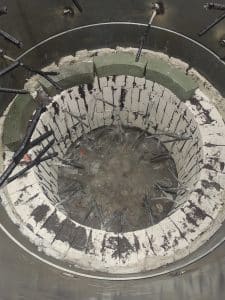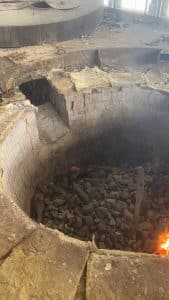What is the service life of firebrick in high temperature kiln? There are many factors that affect the service life of refractory brick in kiln, and material quality is the key factor. If the refractory brick is made of top raw materials, its performance and life are definitely the best! These high-purity raw materials will make the refractory brick much stronger, lower porosity, and higher heat resistance, allowing it to last longer in high temperatures. However, good materials are not enough, and the use conditions and construction quality are also important factors affecting the life of firebricks. The right conditions of use and high-quality construction will also make the firebrick play the maximum potential, and the life will naturally be longer.
What are the factors that affect the use of refractory bricks in high temperature kilns? During the use of firebrick, the use condition is a crucial factor. In the special workplace of high temperature furnace, refractory brick not only has to face the test of high temperature, but also has to deal with the erosion of atmosphere and the torture of heat cycle. First of all, temperature is the biggest enemy of firebricks. As the temperature of the kiln increases, the refractory brick will undergo thermal expansion and then contract when the temperature drops. This repeated thermal expansion and contraction will cause internal stress in the refractory brick, accelerating its damage and aging process. Secondly, the corrosiveness of the atmosphere is also a factor that cannot be ignored. Some specific atmospheres will chemically react with the material of the firebrick, resulting in structural damage and reduced performance. Finally, the thermal cycle is also an important reason for the aging of refractory bricks. Rapid changes in temperature can create huge thermal stresses inside refractory bricks, which can cause cracks in the brick and even fall off. Therefore, in order to ensure that refractory bricks can extend their life, we must strictly control the working conditions of high temperature furnaces, including factors such as temperature, atmosphere and heat cycle.

Similarly, the construction quality has a non-negligible impact on the working life of firebrick. The first-class construction can ensure the perfect splicing of refractory bricks, the tight joint between bricks and bricks, no gaps, no cracks. Such a structure not only improves the overall stability, but also allows them to jointly resist external shocks, increasing the impact resistance. Moreover, proper kiln operation and maintenance are equally critical. The correct operation and maintenance of the kiln is also a necessary condition to ensure the stability of the refractory brick performance and extend its service life. According to the practical application experience and related research results, the service life of firebricks of different materials in high temperature furnace is generally within a certain range.

Of course, the service life of firebrick, this is not just a cold figure, it hides countless variables and details, you need to carefully consider the working environment of firebrick, material quality, construction quality and other key elements, in order to accurately predict its life. However, this is only an estimate, and the real life of the firebrick may be affected by the actual conditions of use. Therefore, in the process of use, we need to ensure the performance and life of the firebrick through regular inspection, maintenance and repair. In this way, firebricks can always be in the best condition to provide us with stable and efficient service.
